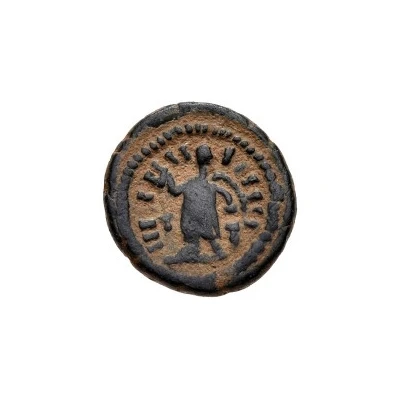


© Classical Numismatic Group, Inc.
Æ
| Bronze | 0.97 g | 11 mm |
| Issuer | Uncertain Germanic tribes |
|---|---|
| Type | Standard circulation coin |
| Years | 401-501 |
| Currency | Solidus (circa 301-750) |
| Composition | Bronze |
| Weight | 0.97 g |
| Diameter | 11 mm |
| Shape | Round (irregular) |
| Technique | Hammered |
| Demonetized | Yes |
| Updated | 2024-10-04 |
| Numista | N#153942 |
|---|---|
| Rarity index | 97% |
Reverse
Victory facing left while dragging captive behind, all surrounded by nonsensical legend.
Script: Latin
Lettering: III I II - IIIIII
Edge
Plain
Comment
This coin is said to be struck sometime in the 5th century, and is also said to be possibly imitating a coin from Theodosius I (379-395). Even so, while how nonsensical the legend is, that cannot be said with certainty.The denominations of bronze coins that are unknown to numismatists are referred to as Æ (AE), followed by the coin's diameter. The Æ part simply means the coin is made of a base alloy, and because the diameter of these coins is never exactly as intended, different numbers can appear after the Æ for the same type.
The exact lettering of the surrounding legend may vary.
Interesting fact
One interesting fact about this coin is that it features a unique blend of Germanic and Roman influences in its design. The coin's obverse (front) side features a depiction of a stylized horse, which was a common motif in ancient Germanic art, while the reverse (back) side bears a stylized rendition of the Roman goddess Victory, highlighting the cultural exchange and blending that occurred during the Roman Empire's expansion into Germanic territories.



